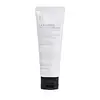What's inside
What's inside
 Key Ingredients
Key Ingredients

 Benefits
Benefits

 Concerns
Concerns

 Ingredients Side-by-side
Ingredients Side-by-side

Water
Skin ConditioningLecithin
EmollientSorbitol
HumectantPanthenol
Skin ConditioningGlucose
HumectantTrilaureth-4 Phosphate
EmulsifyingCarnitine
CleansingCeramide AP
Skin ConditioningSodium Hyaluronate
HumectantCitrus Aurantium Amara Flower Water
MaskingCitrus Junos Fruit Extract
Skin ConditioningPropanediol
SolventPassiflora Edulis Fruit Extract
Skin ConditioningBenzyl Alcohol
PerfumingSalicylic Acid
MaskingSorbic Acid
PreservativeSodium Acrylates Copolymer
Squalane
EmollientSynthetic Fluorphlogopite
Iron Oxides
Parfum
MaskingWater, Lecithin, Sorbitol, Panthenol, Glucose, Trilaureth-4 Phosphate, Carnitine, Ceramide AP, Sodium Hyaluronate, Citrus Aurantium Amara Flower Water, Citrus Junos Fruit Extract, Propanediol, Passiflora Edulis Fruit Extract, Benzyl Alcohol, Salicylic Acid, Sorbic Acid, Sodium Acrylates Copolymer, Squalane, Synthetic Fluorphlogopite, Iron Oxides, Parfum
Water
Skin ConditioningPropanediol
SolventGlycerin
HumectantCaprylic/Capric Triglyceride
MaskingMethylpropanediol
SolventHelianthus Annuus Seed Oil
EmollientBis-Diglyceryl Polyacyladipate-2
EmollientOlea Europaea Fruit Oil
MaskingPolyglyceryl-3 Methylglucose Distearate
EmulsifyingCeramide NP
Skin ConditioningGlyceryl Stearate
EmollientGlyceryl Stearate Citrate
EmollientButylene Glycol
HumectantTrehalose
HumectantButyrospermum Parkii Butter
Skin ConditioningJojoba Oil/Macadamia Seed Oil Esters
Skin ConditioningCarbomer
Emulsion StabilisingAllantoin
Skin ConditioningArginine
MaskingHydroxyethyl Acrylate/Sodium Acryloyldimethyl Taurate Copolymer
Emulsion Stabilising1,2-Hexanediol
Skin ConditioningTocopherol
AntioxidantPentylene Glycol
Skin ConditioningPanthenol
Skin ConditioningSqualene
EmollientHydrogenated Lecithin
EmulsifyingCaprylyl Glycol
EmollientCitrus Paradisi Fruit Extract
Skin ConditioningCetearyl Alcohol
EmollientStearic Acid
CleansingEriobotrya Japonica Leaf Extract
Skin ConditioningSodium Phytate
Phytosteryl Macadamiate
Skin ConditioningAcorus Calamus Root Extract
PerfumingPerilla Ocymoides Leaf Extract
TonicSchisandra Chinensis Fruit Extract
Skin ConditioningSucrose
HumectantPhytosterols
Skin ConditioningCitrus Aurantium Amara Flower Oil
MaskingCynanchum Atratum Extract
Skin ConditioningMineral Salts
Skin ConditioningCeramide Ns
Skin ConditioningCholesterol
EmollientPhytosphingosine
Skin ConditioningCeramide As
Skin ConditioningCeramide AP
Skin ConditioningCeramide EOP
Skin ConditioningWater, Propanediol, Glycerin, Caprylic/Capric Triglyceride, Methylpropanediol, Helianthus Annuus Seed Oil, Bis-Diglyceryl Polyacyladipate-2, Olea Europaea Fruit Oil, Polyglyceryl-3 Methylglucose Distearate, Ceramide NP, Glyceryl Stearate, Glyceryl Stearate Citrate, Butylene Glycol, Trehalose, Butyrospermum Parkii Butter, Jojoba Oil/Macadamia Seed Oil Esters, Carbomer, Allantoin, Arginine, Hydroxyethyl Acrylate/Sodium Acryloyldimethyl Taurate Copolymer, 1,2-Hexanediol, Tocopherol, Pentylene Glycol, Panthenol, Squalene, Hydrogenated Lecithin, Caprylyl Glycol, Citrus Paradisi Fruit Extract, Cetearyl Alcohol, Stearic Acid, Eriobotrya Japonica Leaf Extract, Sodium Phytate, Phytosteryl Macadamiate, Acorus Calamus Root Extract, Perilla Ocymoides Leaf Extract, Schisandra Chinensis Fruit Extract, Sucrose, Phytosterols, Citrus Aurantium Amara Flower Oil, Cynanchum Atratum Extract, Mineral Salts, Ceramide Ns, Cholesterol, Phytosphingosine, Ceramide As, Ceramide AP, Ceramide EOP
Ingredients Explained
These ingredients are found in both products.
Ingredients higher up in an ingredient list are typically present in a larger amount.
Ceramide AP is a type of Ceramide.
Ceramides are intercellular lipids naturally found in our skin that bonds dead skin cells together to create a barrier. Having a strong skin barrier leads to more firm and hydrated skin.
They are known for their ability to hold water and thus are a great ingredient for dry skin. By bolstering the skin ceramides act as a barrier against irritating ingredients. This can help with inflammation as well.
If you would like to eat ceramides, sweet potatoes contain a small amount.
Read more about other common types of ceramides here:
Ceramide NP
Ceramide EOP
Panthenol is a common ingredient that helps hydrate and soothe the skin. It is found naturally in our skin and hair.
There are two forms of panthenol: D and L.
D-panthenol is also known as dexpanthenol. Most cosmetics use dexpanthenol or a mixture of D and L-panthenol.
Panthenol is famous due to its ability to go deeper into the skin's layers. Using this ingredient has numerous pros (and no cons):
Like hyaluronic acid, panthenol is a humectant. Humectants are able to bind and hold large amounts of water to keep skin hydrated.
This ingredient works well for wound healing. It works by increasing tissue in the wound and helps close open wounds.
Once oxidized, panthenol converts to pantothenic acid. Panthothenic acid is found in all living cells.
This ingredient is also referred to as pro-vitamin B5.
Learn more about PanthenolPropanediol is an all-star ingredient. It softens, hydrates, and smooths the skin.
It’s often used to:
Propanediol is not likely to cause sensitivity and considered safe to use. It is derived from corn or petroleum with a clear color and no scent.
Learn more about PropanediolWater. It's the most common cosmetic ingredient of all. You'll usually see it at the top of ingredient lists, meaning that it makes up the largest part of the product.
So why is it so popular? Water most often acts as a solvent - this means that it helps dissolve other ingredients into the formulation.
You'll also recognize water as that liquid we all need to stay alive. If you see this, drink a glass of water. Stay hydrated!
Learn more about Water